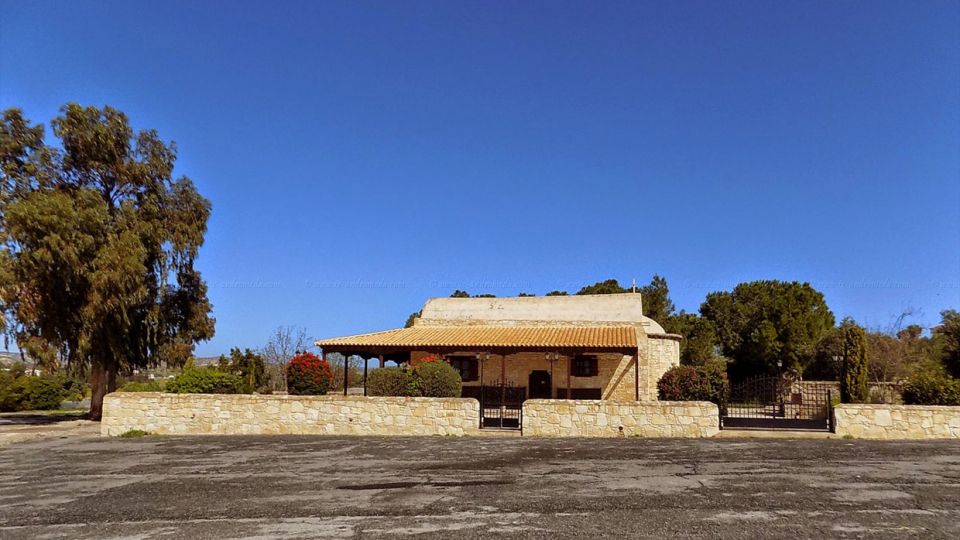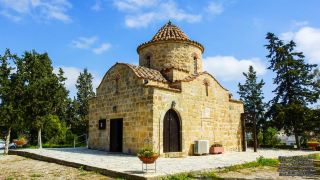The small chapel “Panagia ton Ampelion” (Our Lady of the Vines) or “Panagia Aimatousa” (Our bleeding Lady) is found northwest of the village of Aradippou. It is an old construction, whose history reaches the years of the Saracens and the crusades they made in the area.
It was built on the remains of another Church, that has been destroyed by the crusades. It is possible that in the same area there was a Church of the Hellenistic period, since the region had been settled initially by migrants from Achaia. It has a byzantine style, it is vaulted and it is stone built. The external walls, are about one metre thick. Panagia ton ampelion got its name from the many vines that were there until 1960 in large areas northeast of the Church. It is believed that Our Lady helps women who suffer from hemorrhages and this is why it is also called “Panagia Aimatousa”.
The small chapel, apart from its religious, archaeological and historical value, it has another personal value for each resident of Aradippou. From the past century, the area “Panagia ton Ampelion” was an area where thousands of young people from Aradippou walked until that place and had fun with their friends during Green Monday.
From very early in the morning, the young people of the village, having the necessary products in their hands (crullers and a lot of wine), walked all together towards the chapel. They put up a pure Dionysiac feast for the youth of the area. It was an unwritten law that at that day only the youth could party in the area. The elder ones went elsewhere, mostly to the area of the Salt Sakes (Aliki).
The exit towards Panagia, on the day of Green Monday, was the only opportunity in the whole year for the young people in love to talk between them. To walk, one next to the other and if they were lucky enough they could exchange a quick hand touch.
At a small distance from the chapel, there is a cave that is said to have been the shelter of the King Radippo during the Saracens’ crusades. On the north side, on a small hill, the first settlement of Aradippou was built.
Watch the video of our visit:




